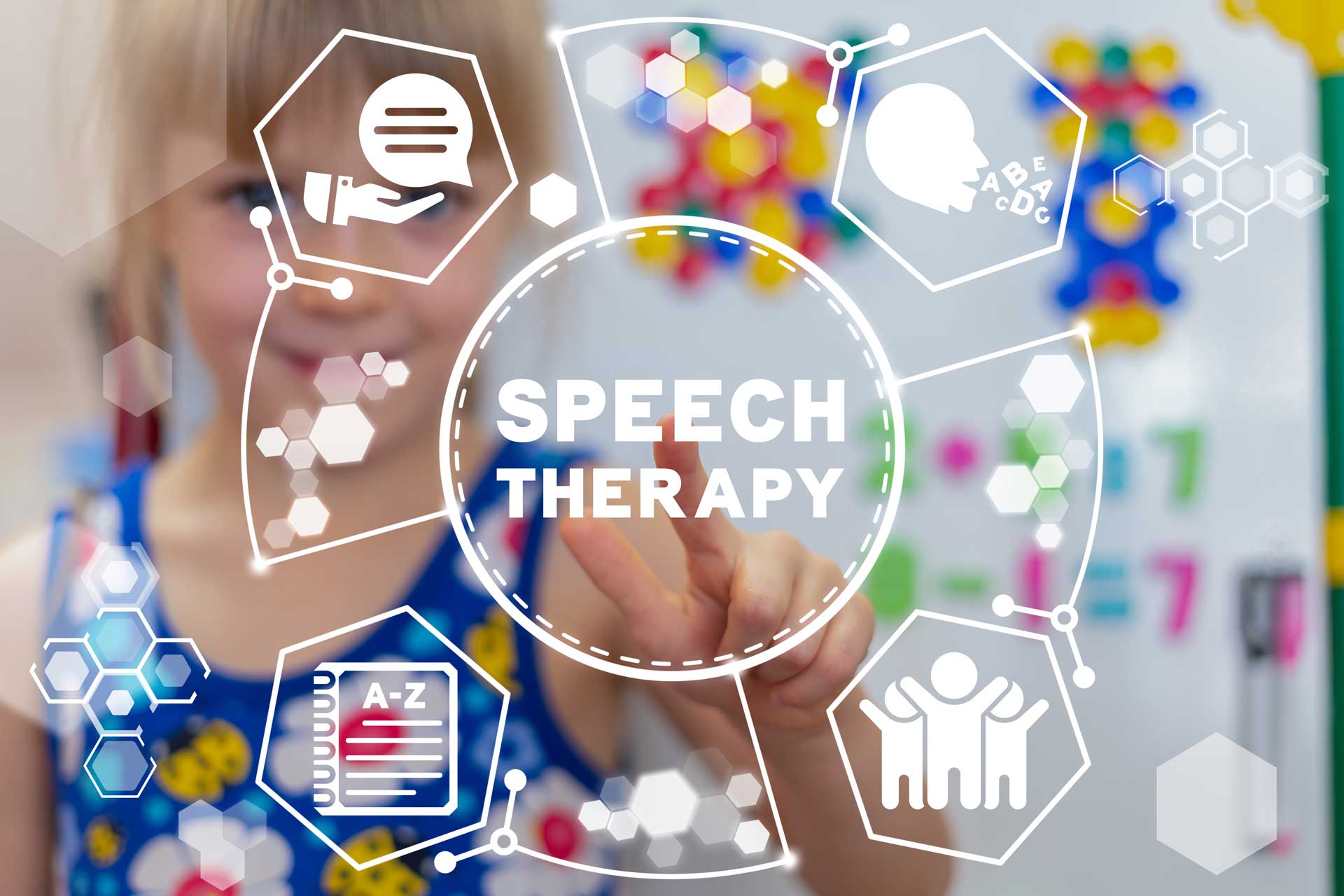
Although children aren’t born with the ability to communicate effectively with words, the learning process begins as infants emit their first coos and gurgles. In their first few years, those sounds start to morph into words as they make the connections between sounds and their surroundings. It’s a wondrous process!
However, some parents and caregivers may notice delays in expected early childhood communication milestones, leading some parents to ask, “What’s normal?” Although children progress at different rates, determining whether your child is just a late bloomer or needs professional help isn’t always easy.
Today’s article addresses speech delays in children, how to recognize them, and how sign language for kids can help with communication disorders in children. We will share valuable tips and advice from KidsCare Home Health’s Speech-Language Pathologists (SLPs) on teaching and using sign language, including valuable parental guidance for speech delays.
Understanding Speech Delays
Speech delays in children are commonly encountered in the primary care setting, as family physicians are integral in identifying and evaluating children with speech and language delays. However, it’s equally important for parents to understand speech delays, what to look for, and how to address communication disorders in children.
Childhood speech delays refer to situations where children’s language acquisition (i.e., development of speech and language skills) falls behind what is considered typical for their age group. These delays can manifest in various ways, such as difficulty articulating sounds, forming words, putting together sentences, or understanding language. Speech delays can occur for multiple reasons, including genetic factors, hearing impairments, neurological conditions, environmental influences, or a lack of exposure to language-rich environments.
It’s essential to understand that some speech delays can be common in early childhood – and many kids catch up to their peers with time and extra guidance. However, when a child’s speech delay persists without improvement or noticeably impacts their communication and social interactions, it may indicate a more significant underlying issue that requires professional assessment and help. In these cases, early detection and interventions are crucial in overcoming challenges and promoting healthy communication development.
The Role of Sign Language in Speech Therapy
Sign language can be a valuable tool for children with speech delays as it provides an alternative means of communication while they work on developing verbal speech skills. Although sign language is commonly associated with the deaf community, the practice can also benefit language development in toddlers, especially those experiencing speech delays. The sign language benefits in speech therapy include:
- Providing an accessible non-verbal early communication tool.
- Reducing frustration and behavioral issues stemming from communication difficulty.
- Enhancing overall cognitive development.
Research suggests1 that exposure to sign language can support and enhance spoken language development in children with speech delays. Specifically, learning sign language provides a foundation for understanding language structure, grammar, and syntax, which can transfer to verbal communication as their speech skills improve.
Therefore, using sign language as a non-verbal communication tool can enhance language development, communication, and social interaction in children with speech delays. Specifically, it can help these children overcome barriers to expression, build essential skills, and improve their overall quality of life. For this reason, many SLPs incorporate sign language into their repertoire of child speech therapy techniques.
Speech Therapists and SLP's Approach at Home

For parents seeking therapy for a child’s speech delay, one of the biggest challenges is often coordinating appointments, including travel to and from a speech therapist, also known as a Speech-Language Pathologists (SLP). That’s why home-based speech therapy services, like those offered by KidsCare Home Health, are a popular option. In these cases, pediatric speech therapy occurs at home between the therapist, child, and their caregivers, resulting in more personalized speech therapy tailored to the child’s needs and environment.
Speech therapy sessions in the child’s home environment ensure comfort, familiarity, and relevance to daily activities. During these sessions, the speech therapist engages the child in various interactive activities and exercises designed to target speech production, language comprehension, vocabulary expansion, social communication skills, and other areas of need.
Pediatric speech therapy techniques often include tailored strategies for teaching sign language, which parents and caregivers can model to reinforce learning and retention outside therapy sessions. Some examples include:
- Visual Aids: Use visual aids such as posters, flashcards, or picture books to introduce and reinforce sign language vocabulary. Visuals can help children with speech delays better understand and remember signs by associating them with pictures or illustrations.
- Modeling: Model the signs yourself and encourage the child to imitate you. Use exaggerated facial expressions and gestures to make the signs more engaging and memorable. Allow the child plenty of opportunities to observe and practice the signs in different contexts.
- Repetition: Repetition is key to learning sign language. Repeat signs frequently and consistently, incorporating them into daily routines and activities. Repetition helps reinforce memory and familiarity with signs over time.
- Multi-Sensory Activities: Incorporate multi-sensory activities that engage different senses, such as sight, touch, and movement. For example, you can use tactile materials like playdough or textured objects to help children feel the shape and movement of their hands when making signs.
- Contextual Learning: Teach sign language in the context of everyday activities and experiences. Use signs to label objects, actions, and emotions in the child’s environment, making the signs relevant and meaningful to their daily lives.
- Positive Reinforcement: Provide plenty of praise, encouragement, and positive reinforcement when the child attempts or successfully uses sign language. Celebrate their efforts and progress, reinforcing their motivation to continue learning and using signs.
- Consistency: Be consistent in your use of sign language, as this helps children with speech delays develop confidence and proficiency in using signs as a means of communication.
Milestones and Timelines in Speech Development
As we touched on earlier, all children progress differently in speech development. Therefore, identifying or recognizing speech delays begins with understanding the expected milestones and timelines in pediatric speech development. Following are the established age-appropriate speech development milestones and vocabulary expectations:
Cooing and babbling: Babies begin producing vowel sounds like “ooh” and “aah” and will begin to babble repetitive consonant-vowel combinations.
First words: Babies begin producing their first recognizable words, typically referring to familiar objects or people.
Vocabulary expansion: They will acquire new words rapidly and have a vocabulary of around 10 to 50 words by 18 months.
Rapid language growth: At this stage, vocabulary expands further, with children continuing to learn new words and beginning to use more complex language structures.
Sentence development: They will begin using more complex sentences with multiple words and grammatical structures, expressing a wider range of ideas and concepts.
Recognizing Speech Delay Warning Signs
Even understanding the milestones listed above, some parents may still have difficulty recognizing signs of speech delays. Therefore, the following are specific signs to watch for during early childhood that may indicate a speech delay.
- There is limited or no babbling by six months of age.
- Does not use gestures to communicate by around 12 months.
- Has very few words or does not start saying recognizable words by 18 months.
- Speech remains limited to only a few sounds or syllables by around 24 months.
- Difficulty understanding simple commands or questions by around 18 to 24 months.
- Speech and language skills are not progressing or are significantly behind their peers in communication milestones.
- They become frustrated when they cannot effectively communicate their needs or desires or withdraw from social interactions due to difficulties understanding.
If you observe any of these signs or have concerns about your child’s speech development milestones, it’s essential to seek professional help. Early intervention is critical to addressing speech delays effectively and promoting healthy communication development. We recommend consulting a pediatrician or speech-language pathologist (SLP) services to evaluate your child for warning signs of speech delay. They can recommend and facilitate the appropriate interventions to support your child’s communication skills if detected.
Advice for Parents
Speech therapy is essential to helping children overcome speech delay challenges. However, the parent’s involvement in speech therapy at home is critical, as they are instrumental in reinforcing what is learned and practiced during each session – especially when the work involves speech therapy techniques like sign language.
Following is the advice offered by KidsCare Home Health speech-language pathologists for parents supporting children with speech delays:
- Be consistent with using sign language at home
- Encourage communication in everyday activities
- Always exercise patience and positive reinforcement
Resources and Support from KidsCare Home Health

If you believe your child is experiencing a speech delay, we recommend following up with your primary care provider for further assessment. Speech delay interventions are most effective when established early and carried out consistently.
KidsCare Home Health is one of the country’s leading providers of in-home pediatric speech, occupational, and physical therapy, and private nursing services. Established by speech therapist Cortney Baker in 2003, KidsCare offers compassionate and quality one-to-one care for children in a familiar environment that includes family members and caregivers. We also offer plenty of online resources for families of children with disabilities interested in learning more about in-home therapies and other relevant information.
1 https://pubs.asha.org/doi/abs/10.1044/1092-4388%282006/021%29
To begin personalized pediatric in-home speech therapy, ask your pediatrician for a referral to KidsCare Home Health or contact us today!
Frequently Asked Questions
What is KidsCare Home Health, and how can it help my child with speech delays?
KidsCare Home Health specializes in providing personalized, at-home speech therapy services for children experiencing speech delays. Our qualified Speech-Language Pathologists (SLPs) use tailored strategies, including sign language, to enhance your child’s communication skills.
How does sign language benefit children with speech delays?
Sign language offers a visual means of communication, assisting children who struggle with verbal expression. It aids in reducing frustration, enhancing understanding, and building a foundation for future speech development.
At what age should I be concerned about my child's speech development?
Speech development varies in children, but there are specific early childhood communication and speech development milestones to be aware of and monitor in the first few years. If your child is not meeting these milestones, such as babbling by 12 months or using words by 18 months, it may be time to consult a professional.
Can sign language be used for children who are not deaf or hard of hearing?
Absolutely! Sign language is a valuable tool for all children, especially those with speech delays, as it provides an alternative way to communicate and express themselves.
What does home-based speech therapy with KidsCare Home Health involve?
Our home-based therapy involves customized sessions by SLPs in the comfort of your home. These sessions focus on interactive activities, family involvement, and practical communication strategies tailored to your child’s needs.
How do I know if my child needs speech therapy?
Signs that your child may benefit from speech therapy include delayed speech milestones, difficulty forming words or sentences, limited vocabulary, and frustration when trying to communicate. Our specialists can conduct an assessment to determine your child’s specific needs.
How can I support my child's speech development at home?
Parents play a crucial role in supporting speech development. Consistently using sign language, engaging in conversation, reading together, and creating a language-rich environment at home are effective ways to support your child.
How can I get started with KidsCare Home Health?
To get started, simply ask your Pediatrician for a referral to KidsCare Home Health. We will then connect with you to discuss your child’s needs, assess their speech and language development, and create a personalized plan that supports their communication journey.
